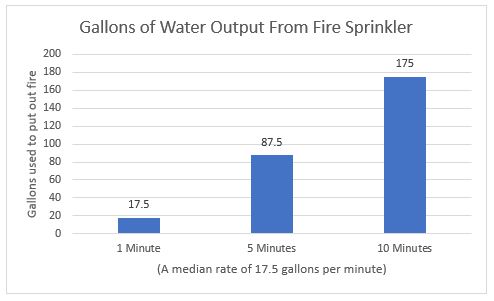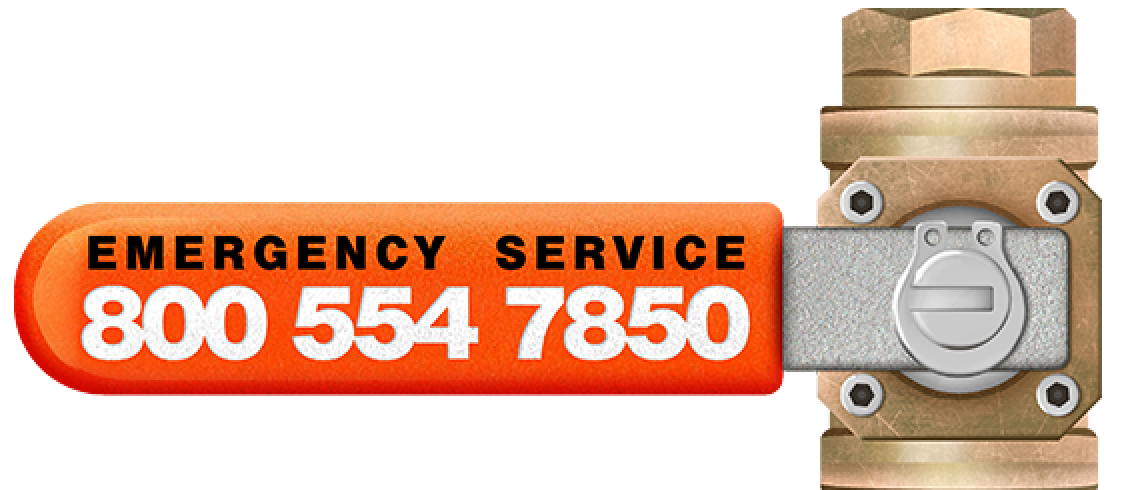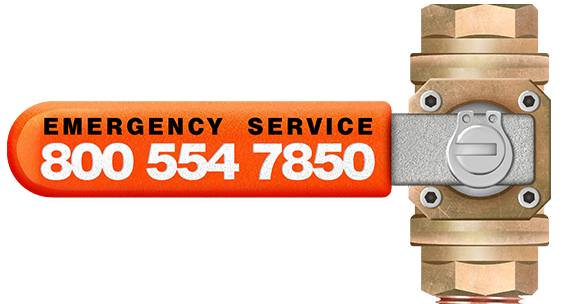Water damage caused by fire sprinklers may be a welcome problem. That seems counterintuitive, but when you consider that the alternative is a raging fire that destroys your whole home or business, it is better to clean up water in a small part of your home than lose everything. If you allow the fire department to put out the fire, they will use much more water. So while you never want to have water damage at all, this damage almost universally means you just dodged a much bigger catastrophe.
Types of Fire Sprinklers
There are different types of sprinklers. The system that is portrayed in movies and TV shows where once tripped, ALL of the sprinkler heads go off and the whole place gets deluged with water is called a Deluge Sprinkler. These are used only in certain situations. They might be used where there is chemical storage or highly flammable liquids are present, perhaps a power generation facility or airplane hanger. They would never be installed in your home or in most businesses.
The system that is installed in most homes or businesses works differently. Instead of a centralized trigger that sets all of the sprinkler heads off at once, the trigger is at the sprinkler head. If that sprinkler head is set off, only that head sprays water. In this way, the water used to contain or arrest the fire is localized to that place in the house. The benefit of this is to limit water damage from the fire sprinkler. The trigger at the sprinkler head is heat sensitive. It is only triggered when the temperature at the sensor is around 155°F. (Systems vary and it could range of 135° – 165°F)
When the fire sprinkler goes off it will deliver around 10 – 25 gallons of water per minute. This is very effective at putting out the fire and preventing the home or business from going up in flames. It saves lives and it prevents exhaustive fire, smoke, and soot damage. That is damage to both the building and the personal property within it.
How Much Water That Could Mean
If it takes 10 minutes for the fire department to arrive, declare the fire controlled, and turn off the water, you’ve just introduced 100 – 250 gallons of water. Now that the fire has stopped doing damage, it’s the water’s turn. That’s a lot of water and it will start doing damage to your property very quickly. If you didn’t have the sprinkler, the fire would continue to grow over those same 10 minutes. When the firemen arrive, their hoses deliver about ten times the water, and with a lot more pressure.
If the fire has spread, it could trigger multiple sprinkler heads. While it does mean a lot more water spread into your home, the hope and expectation are that the fire damage will be minimized. With a quick cleanup, you can minimize the impact of the water damage done to the rest of your property.

Cleanup Right Away After Fire Sprinkler Use
As soon as you get clearance from the fire department to start cleaning up, call Construemax at (800) 544-7850. We’ll be there to clean up this mess, and a mess it will be. The water damage from the fire sprinkler should be limited to the area where the fire was. What our expert water mitigation team will do is:
- Clean up the water. That means we will remove any that is collected in puddles, even if it is inches of water. This includes extracting it from any carpets that have soaked it up.
- Remove everything that got wet. This is all of your personal belongings be it furniture, electronics, wall hangings, papers, clothing, whatever you have. As for the building itself, we’ll remove whatever is appropriate for the situation. It could include carpet, hardwood/vinyl/laminate flooring, drywall, light fixtures, or any building materials that would need to be removed to be able to properly dry out the property.
- Our team will document everything they can and create an inventory of what is salvageable and what is not. This will help you when you report the incident to your insurance company.
- We’ll install industrial-grade equipment to quickly dry out the affected area. This will include air movers (an industry term for really heavy-duty fans) and dehumidifiers.
- Our technicians will monitor and document the progress of the dry out daily until the drying goal is met.
Water Damage Upstairs Usually Means Downstairs Too
If this happens in a multi-story building then the rooms below will very likely be affected as well. We will inspect the entire space so as to place the appropriate dry out equipment there too. Water travels very quickly through building material finding every crack and crevise and slipping through.
If you have neighbor tenants below you, you will want to work with them to ensure that they have addressed the water damage in their property. This is true from a perspective of “caring for your fellow man”, but it is also true because water that isn’t dried up will lead to mold, and mold will spread.
Water Damage Turns to Mold
Mold needs moisture and it needs food. The moisture from your sprinkler system is way more than enough for mold to grow. But the food? Well, that is your building. The wood, the drywall, the insulation, nearly everything it comes in contact with becomes food for mold. The physical deterioration of your property by mold is bad enough, but the health risks are much more immediately felt.
Physical reactions to mold in your home can be subtle because symptoms can be things like headaches, runny/itchy nose, fatigue, and so much more, even depression. And all of those symptoms can be caused by other things as well. Additionally, not everyone experiences a reaction in the same way. Like seasonal allergies, one type of pollen that causes one person absolute misery may do nothing to someone else living in the same home. That same person may tolerate another type of pollen just fine and their partner be in misery. One person could be seriously affected by one type of mold and another person in the same house have no symptoms at all.
Mold Prevention is the Answer
Do not allow mold to grow. Don’t even give it a chance. Moisture, a food source, and a little time will allow mold to grow. Deprive the mold spores of any of these things and you successfully prevent the growth of mold. Since we can’t stop time and you need your home, moisture levels are the only one of these three you can control. Again, that’s where Construemax can help. If you have a fire sprinkler go off in your home call us. We are IICRC certified water mitigation experts that handle all disaster cleanup, including fire, smoke, soot, and mold.
We hope you will never need our services. But if the unexpected happens, Relax – Trust Construemax.







